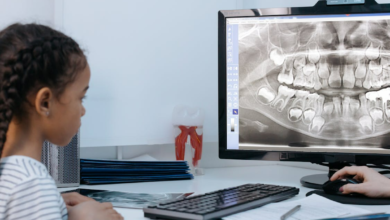Modern Eye Clinics: Combining Technology with Personalized Care

Modern eye clinics have moved far beyond basic vision checks. Today, they serve as comprehensive care centers offering advanced diagnostics, surgical interventions, and ongoing management for a variety of eye conditions. From childhood vision development to age-related diseases like glaucoma or cataracts, these clinics play a crucial role in preserving long-term vision. More importantly, they emphasize early detection, which can significantly reduce the risk of irreversible damage.
How Technology Is Changing Eye Examinations
Eye exams today are more precise, quicker, and less invasive, because of technological advancements. Devices like optical coherence tomography (OCT), fundus cameras, and corneal topographers can detect issues at a microscopic level. These tools allow eye specialists to identify conditions like retinal detachment, macular degeneration, or diabetic retinopathy early, even before major symptoms appear. This kind of progress ensures patients receive timely and accurate treatment plans.
Diagnostic Tools Used Today
Modern eye clinics rely on a suite of advanced tools to ensure comprehensive eye health assessments. Some tools used devices include:
- OCT (Optical Coherence Tomography) for detailed retinal imaging
- Visual Field Analyzer for detecting peripheral vision loss
- Autorefractors to quickly assess refractive errors
- Non-contact tonometers for painless eye pressure measurement
Advancements In Laser And Surgical Eye Treatments
Laser technology has revolutionized vision correction and eye disease management. Procedures like LASIK and SMILE are now safer, quicker, and more precise, offering rapid recovery and minimal discomfort. Beyond vision correction, laser therapies are used for treating retinal tears, glaucoma, and diabetic eye diseases. Likewise, surgical procedures have become less invasive with tools like femtosecond lasers and microincision instruments. These advancements help ensure better outcomes, shorter downtime, and lower complication risks.
Tele-Ophthalmology
Telemedicine has made its way into ophthalmology. In rural areas or for patients with limited mobility, tele-ophthalmology bridges the gap between expert care and accessibility. Patients can now have their eye scans reviewed remotely, get virtual consultations, and even receive follow-up care without leaving their homes. While not a complete replacement for in-person exams, it’s an efficient way to extend specialized care to undermined populations.
The Importance Of Personalized Treatment Plans
Personalized care begins with listening and understanding a patient’s lifestyle, medical history, and concerns. Based on that, eye specialists create treatment plans that are realistic and sustainable for the individual. Whether it’s selecting the right lens for cataract surgery or developing a custom treatment schedule for dry eye, personalization improves patient adherence and outcomes. This shift from generic protocols to bespoke care is a basis of modern eye practice.
Chandigarh has become a healthcare hub in northern India, because of its infrastructure, skilled professionals, and patient-first care. Many centers are equipped with modern devices and are led by specialists trained at top institutions. Whether it’s a routine eye exam or complex retinal surgery, Chandigarh offers trustworthy and transparent care options. If you’re looking for reliability and comfort, visiting the best eye clinic in Chandigarh would be the right choice.
Patient-Centric Design
Beyond equipment and expertise, the best clinics today are designed with patients in mind. From shorter wait times to more welcoming interiors, every aspect is created to reduce stress and enhance comfort. Pediatric sections are more colorful and interactive, while elderly patients often have dedicated staff support. Accessibility features like ramps, larger fonts on forms, and multilingual instructions are becoming common.
See Also: How does acoustic leak detection technology make non-invasive leak tracing possible?
Digital Record Keeping And Seamless Follow-Ups
Electronic medical records (EMRs) help clinics maintain organized, secure, and easily accessible patient histories. This allows eye specialists to track progress, share data with other healthcare providers, and schedule follow-ups with precision. Patients also benefit from timely reminders, digital access to reports, and seamless transitions between departments. It’s not just about convenience, it significantly enhances continuity of care, which is vital in managing chronic or progressive eye conditions.
Bridging The Gap Between AI And Human Expertise
Artificial Intelligence is gradually integrating into ophthalmology, aiding doctors in analyzing complex eye scans. AI can flag potential issues such as diabetic retinopathy or glaucoma in seconds, improving early detection rates. However, it doesn’t replace the understanding and empathy of a trained physician. Instead, AI serves as an assistant, enhancing diagnostic accuracy and allowing human experts to focus more on patient interaction and decision-making.





